How AI Maps Pest Trends for Better Control
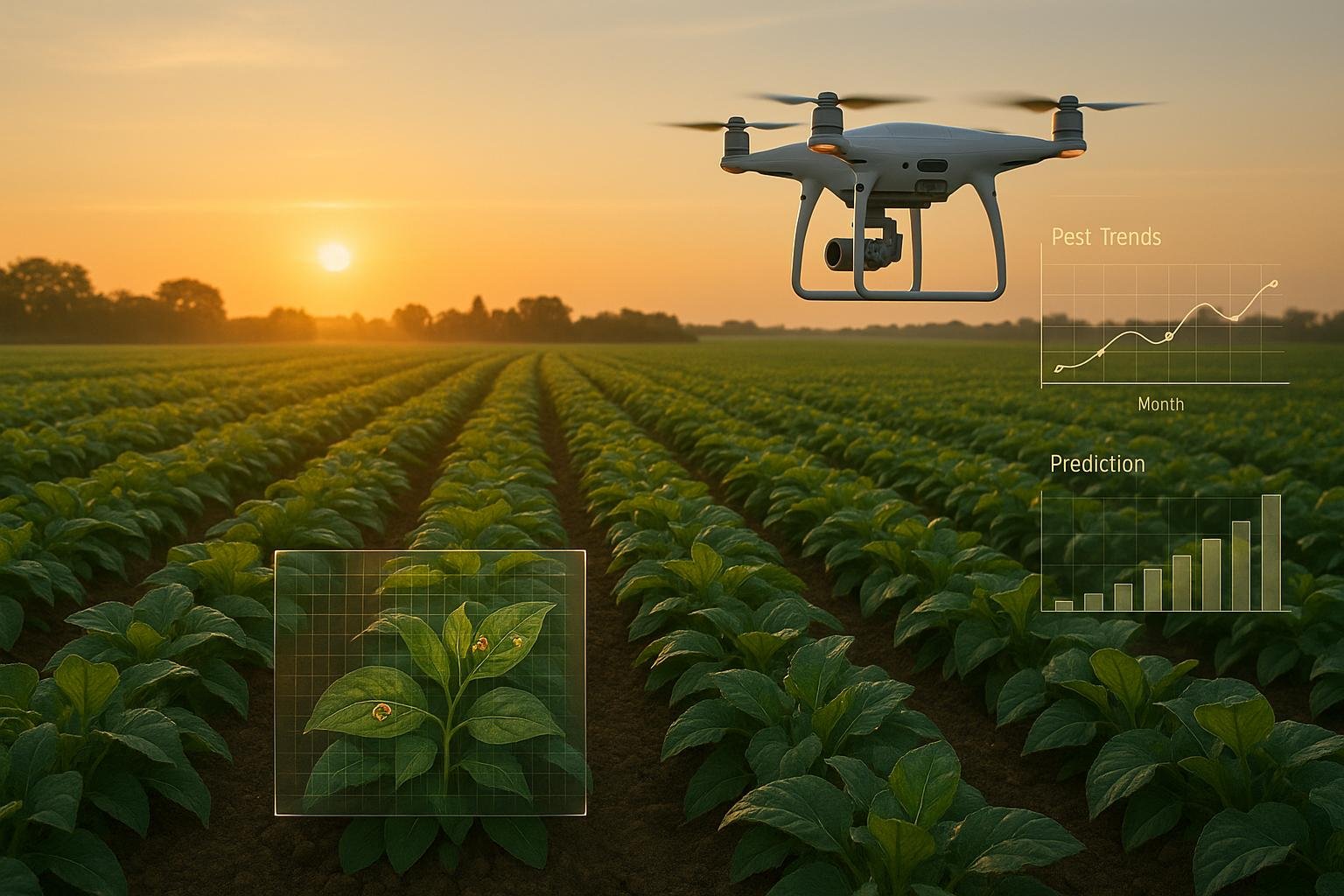
AI is transforming pest management by turning data into precise, actionable strategies. Instead of relying on outdated methods, AI uses real-time data and historical trends to predict pest outbreaks, optimize treatments, and reduce chemical use. Here’s why this matters:
- Accurate Predictions: AI forecasts pest activity with up to 85% accuracy, helping prevent infestations before they happen.
- Smarter Tools: Systems like smart traps and sensors identify pests, monitor behavior, and guide interventions.
- Cost Savings: Businesses report a 5% boost in crop yields and a 4% drop in protection costs.
- Eco-Friendly Practices: AI minimizes chemical use by up to 90%, protecting plants and beneficial species.
AI doesn’t just solve pest problems - it helps prevent them. By integrating weather data, pest life cycles, and crop conditions, AI delivers tailored solutions for better pest control and healthier gardens.
Revolutionizing Pest Control with AI

How AI Collects and Processes Pest Data
Tackling pest issues effectively starts with gathering the right data - a crucial step in identifying patterns and planning smarter interventions. AI systems today pull data from a variety of sources to build detailed profiles of pest behavior and activity.
Pest Data Sources
AI-powered pest detection systems rely on tools like satellite imaging, drones, and ground sensors to get a full picture of pest activity [3]. Ground sensors, in particular, act as the first line of defense, keeping track of environmental changes and converting them into digital signals that AI can analyze.
Take the EFOS Ltd. Trapview system as an example. It uses IoT-enabled insect traps equipped with cameras and sensors to monitor pest populations in orchards and vineyards. But it doesn’t stop at just counting pests. This system dives deeper, analyzing pest behavior, timing, and environmental conditions to guide timely actions [3]. AI systems also incorporate data on crop health, pest movements, and environmental factors to fine-tune pesticide use [3].
These diverse inputs create the foundation for real-time monitoring.
Real-Time Data Collection
AI systems equipped with cameras and sensors capture data in real time, making it easier to identify problems early and respond efficiently. For instance, Rentokil’s PestConnect system keeps tabs on customer locations 24/7, offering instant insights and trend reports [1]. By combining data from multiple sensors - like those measuring humidity, temperature, and motion - these systems develop an in-depth understanding of the environment [3].
The benefits of such systems are evident in real-world applications. Semios, in partnership with Google, boosted almond production by using AI to cut down a moth population by 1.5 billion [1]. Similarly, cotton farmers have effectively tackled bollworm outbreaks by combining AI-based pest detection with pheromone traps, reducing unnecessary pesticide use [1].
By pairing real-time data with historical trends, AI can predict pest activity with greater precision.
Merging Historical and Current Data
Blending historical data with real-time observations helps uncover subtle patterns and detect potential outbreaks early [5]. Historical records add context, turning isolated data points into actionable trends.
Australia’s Commonwealth Scientific and Industrial Research Organisation (CSIRO) Pest Forecast platform is a great example of this approach. The system uses machine learning to analyze weather forecasts alongside historical data, allowing farmers to take proactive steps [3]. By factoring in meteorological trends, crop development stages, and pest life cycles, it creates highly detailed predictive models [3].
Anticimex’s SMART system also highlights the power of combining data. Using sensors and cameras for continuous monitoring, it compares current pest activity against historical data to deliver targeted, fast interventions [5].
The stakes are high when it comes to pest management. According to the Food and Agriculture Organization, pests are responsible for 20–40% of global crop losses, costing the economy around $290 billion annually [2]. By turning scattered data into actionable insights, AI is reshaping pest management and paving the way for advanced tools that help visualize and analyze these challenges on a whole new level.
AI Data Visualization for Pest Patterns
AI takes sensor and camera data and turns it into easy-to-understand visuals that reveal pest trends often buried in raw numbers. By simplifying complex datasets, AI helps uncover patterns that might go unnoticed in traditional spreadsheets. The rising interest in these tools is evident, with the geospatial analytics AI market projected to hit $172 million by 2026, signifying its growing role in agriculture and pest management [6].
Heatmaps and Geographic Tracking
AI-generated heatmaps provide a clear visual representation of pest activity, using color gradients to highlight problem areas. Cooler colors indicate low activity, while warmer shades point to high pest density, making it easier for farmers to see where interventions are needed. These maps can be tailored based on various factors like pest counts, damage levels, or environmental conditions. Think of these heatmaps as similar to weather maps that show temperature fluctuations, but instead, they track pest hotspots.
Creating effective heatmaps involves selecting the right color schemes and setting accurate density parameters to ensure clarity. By integrating geospatial data, AI not only maps current pest activity but also detects subtle environmental shifts that could signal emerging threats [6] [7] [8].
Seasonal and Time-Based Trends
AI also excels at analyzing pest activity over time. Using time-series graphs and seasonal models, it identifies recurring pest cycles and flags unusual spikes in activity. By factoring in historical data, weather patterns, and crop conditions, AI provides insights into when pests are most likely to appear. This allows farmers to act proactively, applying preventive measures before pests cause significant damage, reducing the reliance on last-minute, reactive treatments [9].
User-Friendly Dashboards
Dashboards powered by AI make pest monitoring data accessible and actionable. These interfaces consolidate information into a single view, offering customizable options to focus on specific areas or pest types. As Caroline Lee aptly puts it:
"Data visualization is a great way to simplify data and show it in a form that is understandable, insightful, and actionable. Data visualization is being increasingly seen as the vital final step of any successful data-driven analytics plan."
Good dashboards cater to various users, from technicians to farm managers and executives, by providing role-specific customization. They include visual aids like charts, graphs, and heatmaps, along with key metrics such as pest activity levels, response times, and treatment outcomes. Features like real-time updates, exportable reports, and anomaly detection ensure that information is easy to share and act upon. These tools not only simplify decision-making but also pave the way for predictive pest control strategies, which will be explored next [10].
sbb-itb-4d6a8dd
🚀 Ready to Reinvent Your Garden?
Join thousands of homeowners who have transformed their gardens using our AI design tool. Upload one photo to explore endless possibilities.
Get your AI garden designs →Using AI Analytics to Improve Pest Control
AI is changing the way pest control is managed by turning raw data into clear, actionable strategies. Instead of relying on blanket treatments that often waste time and resources, AI can pinpoint the exact time, place, and method for intervention. This precision is critical, as pests are responsible for 20–40% of global yield losses, costing the economy an estimated $290 billion annually [2]. By focusing on targeted solutions, AI helps create more efficient and effective pest management strategies.
Targeted Treatment Applications
AI uses detailed data - like pest behavior, environmental conditions, and past infestation trends - to determine the best timing and location for pesticide application. This approach not only improves results but also significantly reduces chemical use. For example:
- Blue River Technology's smart sprayer can distinguish between crops and weeds, cutting herbicide use by up to 90% [1].
- FarmSense analyzes insect and environmental data to suggest precise spray schedules for pests like navel orangeworms in nut orchards [1].
- Anticimex SMART Digital Rodent Control System employs digital traps and sensors to predict rodent activity, ensuring traps are placed where they’re most effective [1].
These tools demonstrate how AI can make pest control both smarter and more resource-efficient.
Predictive Analytics for Early Action
One of AI’s standout features is its ability to predict pest outbreaks before they become visible. By analyzing factors like weather patterns, soil conditions, crop health, and historical data, AI systems can forecast infestations with up to 85% accuracy [13]. Here’s how it works:
- Sensors and weather stations collect real-time data.
- Machine learning identifies patterns in the data.
- Predictive models analyze climate trends and crop cycles.
- Automated systems recommend specific interventions.
For example, GreenScape Solutions combined weather data with historical pest reports in urban areas, cutting pest complaints by 40% in just one year [11]. These predictive capabilities allow for proactive measures, saving time and reducing damage.
Custom Recommendations for Different Situations
AI doesn’t just predict problems - it also tailors solutions to specific conditions. By factoring in crop types, regional climates, and pest species, AI can create customized strategies for maximum effectiveness. Some examples include:
- AgroTech Innovations paired predictive analytics with satellite imagery, boosting crop yields by 25% while using fewer pesticides [11].
- Advanced models with 92% accuracy enable drone-based treatments, cutting chemical application by as much as 90% [13].
- Smart sensors monitor soil moisture and weather, fine-tuning watering and pest-control schedules.
- AI-driven image analysis detects pests or diseases early, enabling targeted, species-specific treatments [4].
This tailored approach not only improves pest control but also supports the health of the surrounding ecosystem. By adapting to changing conditions and emerging threats, AI ensures sustainable, long-term solutions for pest management.
Combining AI Pest Control with Garden Management
Gardening has entered a new era, blending AI-driven pest control with thoughtful garden design. This approach focuses on staying ahead of potential problems. Instead of reacting to infestations after they occur, AI systems analyze regional patterns, seasonal cycles, and plant vulnerabilities to predict and prevent pest issues. The result? Healthier gardens with fewer expensive interventions [15]. This forward-thinking method also allows for tailored garden plans that anticipate and address pest challenges before they arise.
Custom Pest Control in Garden Planning
Take AIGardenPlanner, for example. This platform combines AI-powered garden design with pest management insights to create smarter, more resilient gardens. By analyzing factors like local climate, soil type, and sunlight exposure, it suggests plants that are naturally better equipped to handle common pests in your region [12]. Starting with the right plants is a powerful first step in keeping pests at bay.
The AI Plant Advisor goes further by factoring in the seasonal pest patterns specific to your area [15]. For instance, if you're designing a garden in the southeastern United States, it might recommend plants that can naturally withstand pests like aphids or spider mites.
Beyond plant selection, AI tools use microclimatic analysis to determine the best placement for each plant, boosting their health and resistance to pests [12]. These platforms also create personalized pest calendars based on local weather trends [15], helping gardeners take preventative actions at just the right time. Together, these tools offer a comprehensive strategy, from plant selection to ongoing pest management.
Supporting Eco-Friendly Practices
AI-powered pest control also supports eco-conscious gardening by detecting issues early and suggesting organic solutions. This aligns with integrated pest management (IPM), a strategy that combines multiple sustainable methods to control pests effectively [3].
The environmental perks are hard to ignore. For example, AI-driven smart sprayers can pinpoint and treat only the affected weeds or pests, cutting chemical usage by up to 97% compared to traditional methods [16]. For home gardeners, this means targeted treatments that protect beneficial insects while handling pest problems efficiently.
These tools also promote smarter resource use. For instance, smart irrigation systems connected to AI platforms adjust watering schedules based on weather forecasts, soil moisture, and the specific needs of plants, reducing water waste [14]. Proper hydration not only conserves resources but also strengthens plants, making them less vulnerable to pests.
AI technology encourages biodiversity by recommending native plants that attract pollinators and other helpful insects. Apps like Plantix make it easy to identify problems and provide targeted, eco-friendly solutions [14]. This focus on native species and balanced ecosystems helps create gardens that thrive naturally.
Conclusion: AI Changes Pest Management
AI is reshaping how we approach pest control in gardens and agriculture. With systems capable of predicting pest outbreaks with an impressive 85% accuracy - weeks before any visible signs appear - and precision technologies like drones reducing chemical use by up to 90% [13], the transformation is undeniable.
The financial impact is just as striking. Businesses using AI-driven pest monitoring report an average 5% boost in both crop yield and quality, paired with a 4% reduction in plant protection costs [17]. Considering pests are responsible for 20–40% of global yield losses and cost the economy $290 billion annually [2], these savings are game-changing for commercial growers and home gardeners alike.
AI's integration into broader gardening tools takes its utility to the next level. For instance, platforms like AIGardenPlanner combine garden design with pest management insights. By factoring in local climate, seasonal pest cycles, and plant vulnerabilities during the planning stage, these tools help gardeners choose plants that are naturally more resistant to pests, turning pest control into a proactive rather than reactive process.
The environmental benefits are equally important. AI pest management shifts the focus from treating infestations to preventing them. Machine learning algorithms analyze millions of data points to predict pest activity with 92% accuracy [13]. This predictive approach allows gardeners to act well before pests become a visible problem, aligning perfectly with Integrated Pest Management (IPM) strategies, which can cut treatment costs by 25–40% while enhancing long-term prevention [13].
As this technology continues to evolve, its applications are expanding to cover a wider range of crops, climates, and pest types. With growing demand for sustainable solutions, AI-powered pest management offers an effective way to balance productivity with environmental care. For gardeners, both commercial and amateur, predictive analytics and integrated planning are setting the stage for the future of pest control. AI is not just improving pest management - it’s redefining it.
FAQs
How does AI enhance pest detection and prediction compared to traditional methods?
AI is transforming pest detection and prediction through the use of advanced machine learning algorithms. These systems can analyze massive datasets, factoring in elements like temperature, movement, and sound. The result? AI can pinpoint pest activity with impressive accuracy - often reaching up to 96% - a level that traditional manual inspections simply can't match.
Because AI processes data both quickly and precisely, it supports faster decisions and smarter pest management strategies. This approach minimizes the reliance on heavy chemical treatments, making pest control not only more effective but also kinder to the environment.
How does AI help create eco-friendly pest control strategies?
AI is transforming pest control into a more environmentally conscious practice. By enabling precise pesticide application, it minimizes chemical waste and prevents harmful runoff into surrounding ecosystems. This means crops stay healthy without compromising the environment.
On top of that, AI-powered tools excel at spotting pest infestations early. They allow for targeted control measures, cutting down on the need for widespread chemical treatments. These smarter approaches not only protect soil health and biodiversity but also promote a more sustainable way of farming.
How do AI-powered tools like heatmaps and dashboards help farmers control pest outbreaks more effectively?
AI-powered tools like heatmaps and dashboards give farmers real-time insights into pest activity by mapping out infestation patterns and trends across their fields. These visual tools help identify problem spots, prioritize treatment areas, and monitor pest movements over time.
With this information, farmers can implement precise pest control strategies, which means using fewer pesticides, lowering costs, and supporting more sustainable farming methods. When paired with predictive analytics and geospatial data, these tools allow farmers to anticipate pest outbreaks and protect their crops more effectively.
🎨 Visualize Your Dream Garden Today!
Transform any outdoor space into a professional landscape design in minutes. Just upload a photo, choose your style, and let our AI do the rest.
Start your garden transformation now →Related posts
Related Articles
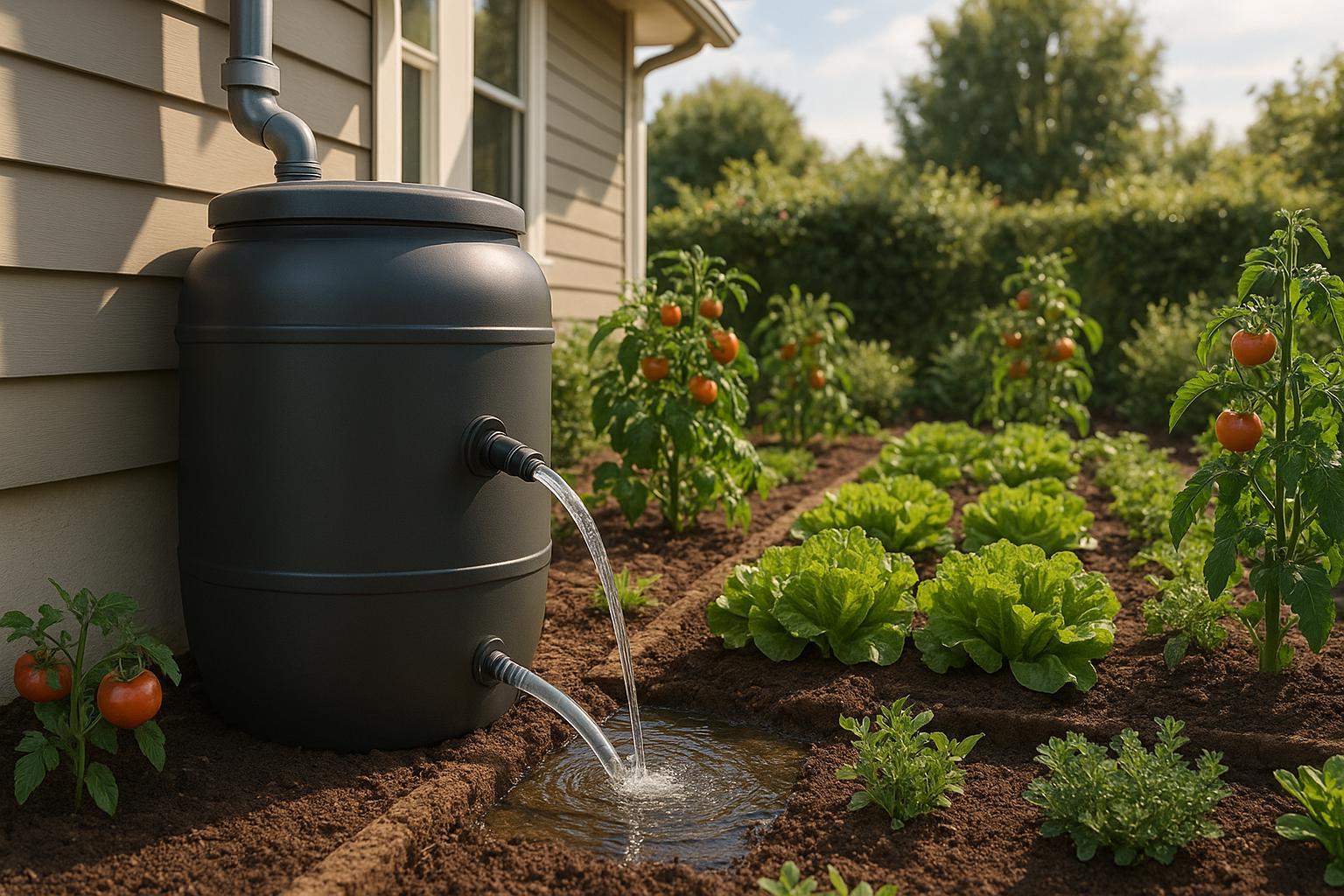
Ultimate Guide to Rainwater Filtration for Gardens
Learn how to implement an effective rainwater filtration system for your garden, enhancing plant growth while conserving water and reducing costs.

How to Build an 8 x 4 Raised Bed for Your Garden
Learn the benefits and steps to building an 8 x 4 raised bed for your garden. Control soil quality and drainage for healthier plants. Best practices for maintenance included.
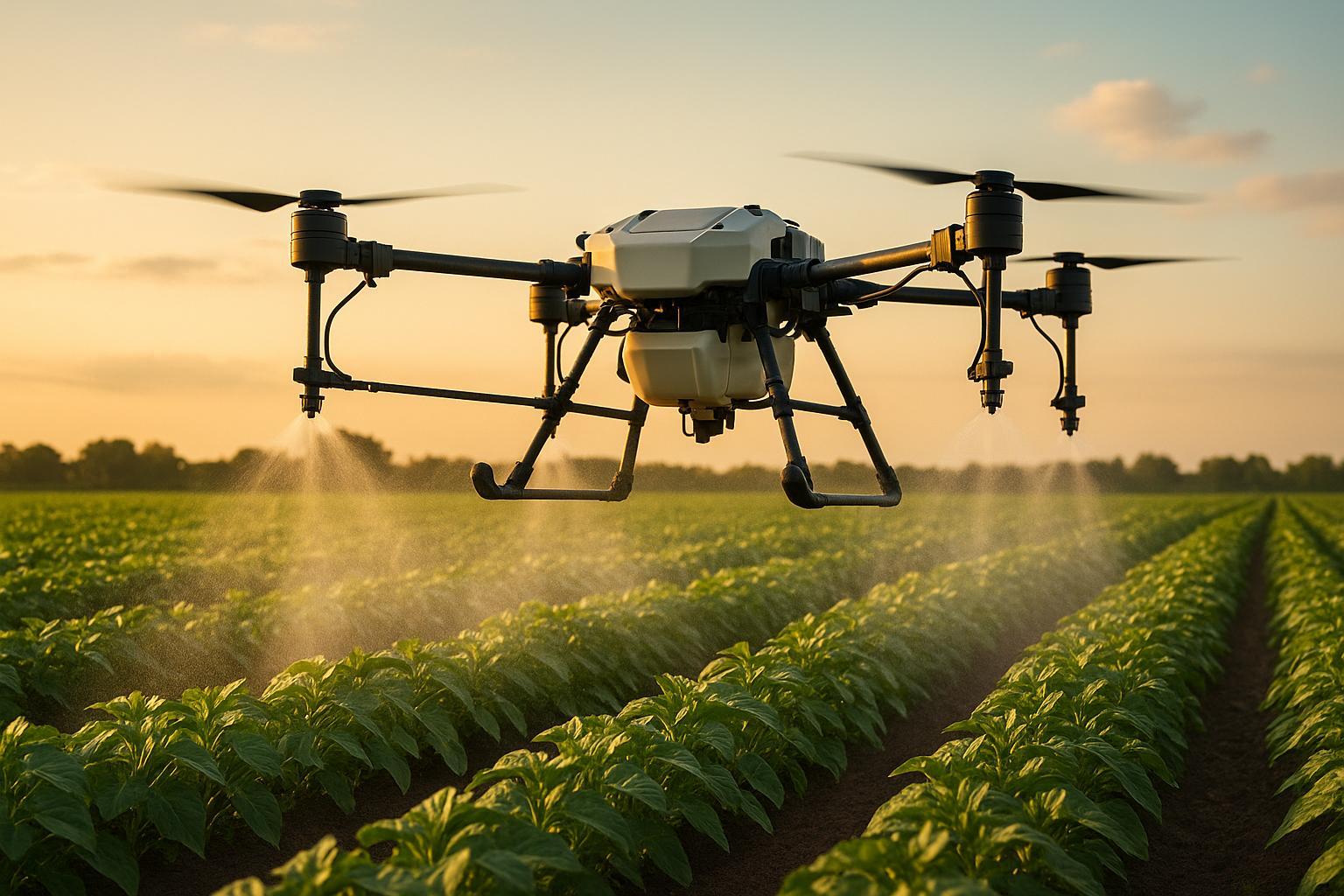
AI in Spray Coverage: How It Improves Accuracy
AI technology is revolutionizing agricultural spray coverage, enhancing precision while cutting costs and reducing environmental impact.
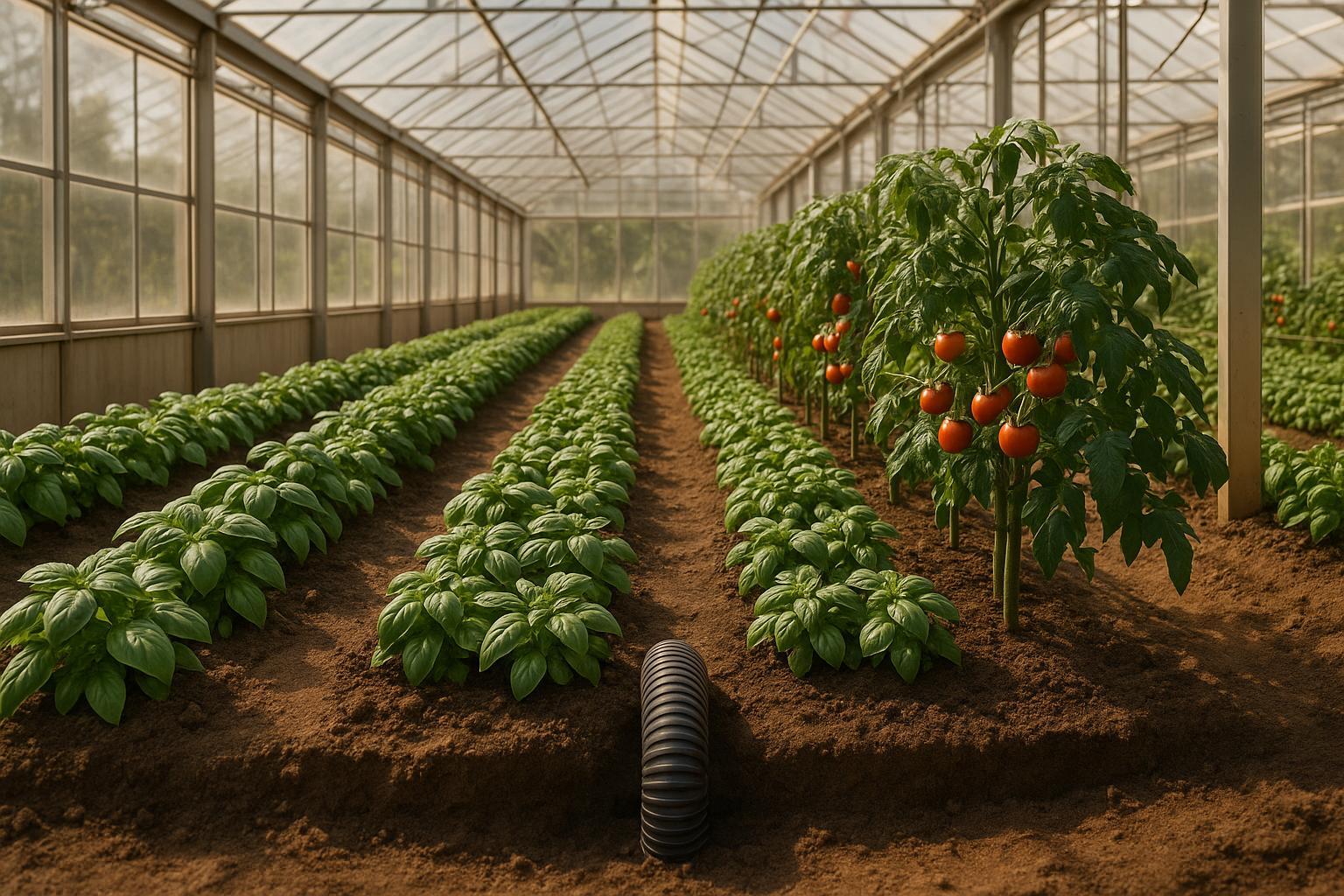
Companion Planting with Geothermal Climate Control
Explore how geothermal climate control enhances companion planting by creating optimal growing conditions, boosting yields, and reducing energy costs.
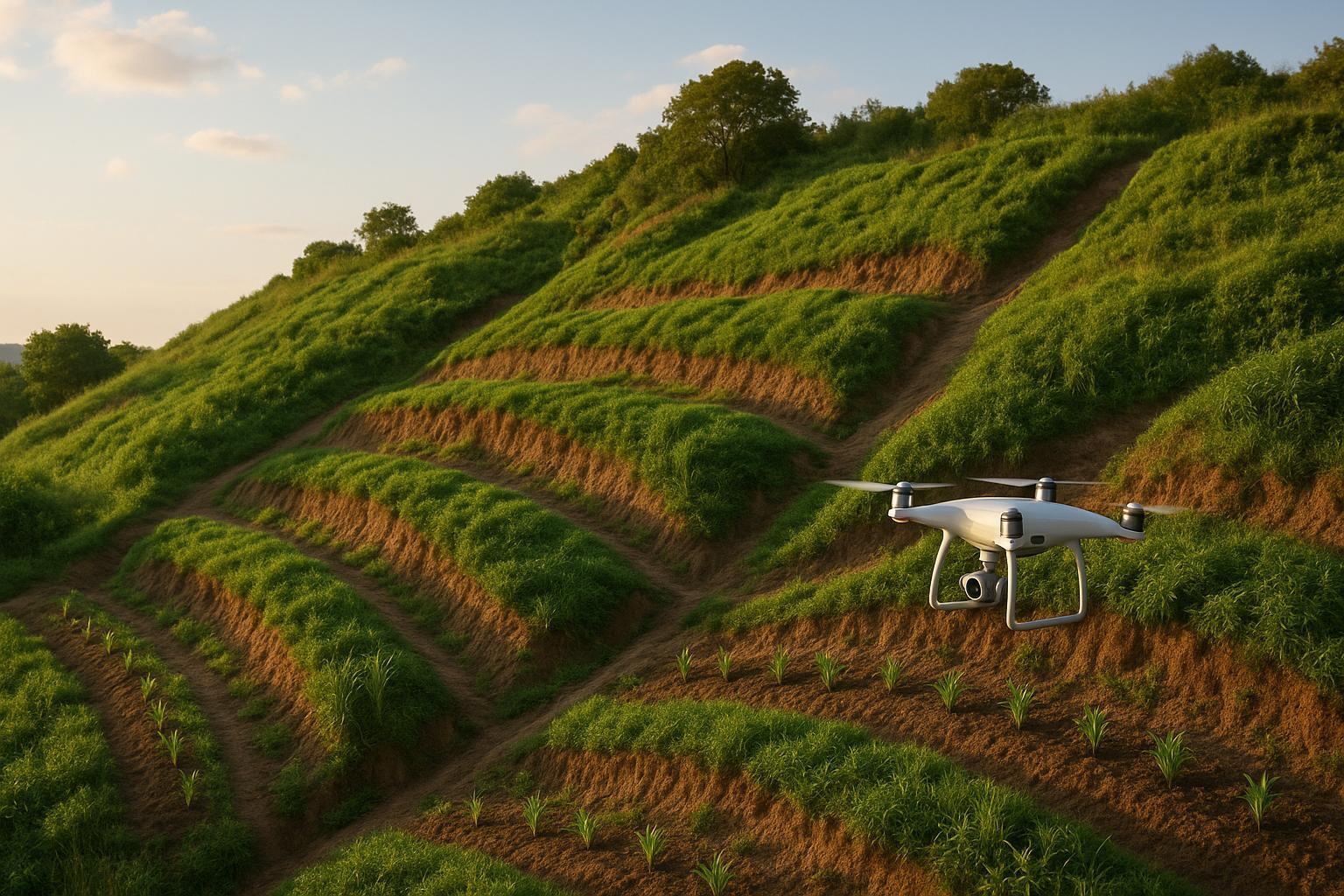
AI Tools for Soil Erosion Control
Explore how AI tools are revolutionizing soil erosion control with real-time monitoring, mapping, and tailored strategies for effective land management.
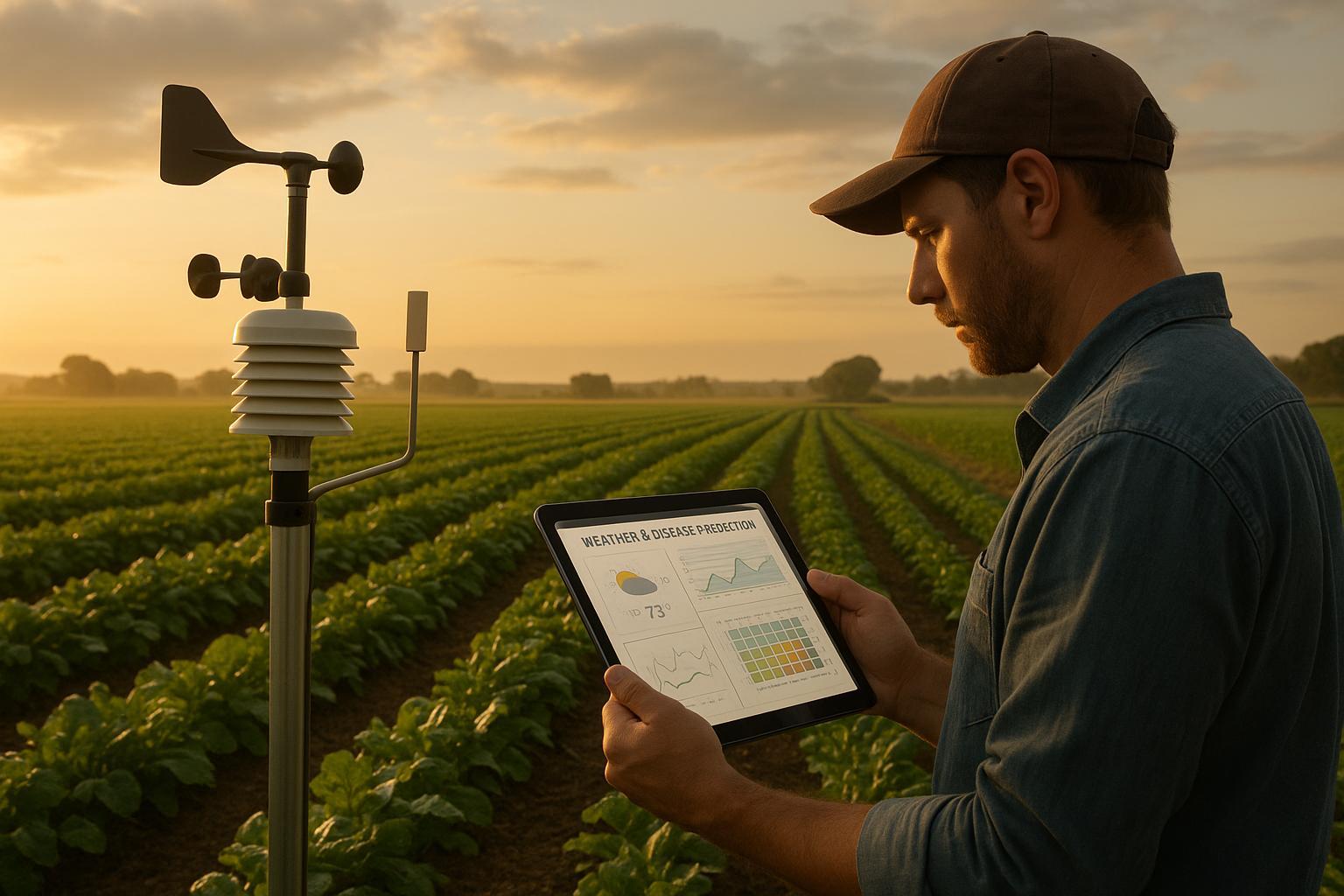
AI Weather Models for Disease Prediction: How They Work
AI weather models enhance disease prediction in agriculture by analyzing local climate data, helping farmers mitigate risks effectively.